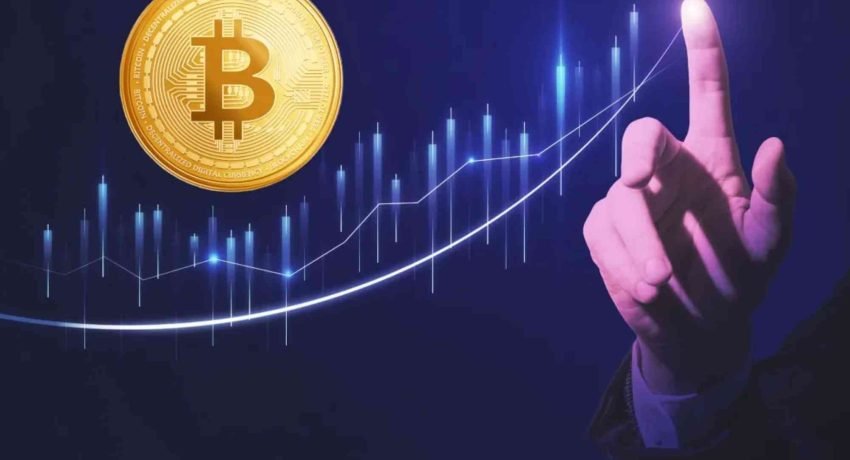Introduction
Bitcoin’s journey from a niche digital experiment to a global financial phenomenon has been nothing short of remarkable. Over the years, its value has surged, capturing the attention of investors, institutions, and even governments. But the question remains: Why Bitcoin is increasing in value? Understanding this requires looking at a mix of economic, technological, and psychological factors that drive Bitcoin’s price upward.
Understanding Bitcoin’s Unique Value
Bitcoin is not just another cryptocurrency—it’s the first decentralized digital currency built on blockchain technology. Its design limits the total supply to 21 million coins, a feature that makes it inherently scarce, much like gold. This scarcity, combined with growing global demand, forms one of the core reasons why Bitcoin is increasing in value.
Moreover, Bitcoin operates independently of central banks or governments. This gives it a unique appeal as a hedge against inflation and political uncertainty. Many investors view it as “digital gold” — a store of value in times of economic instability.
The Supply and Demand Equation
One of the most powerful drivers behind Bitcoin’s price is the basic economic principle of supply and demand. Bitcoin’s supply is fixed at 21 million coins, and around 19.7 million have already been mined. As we approach the final supply limit, the scarcity intensifies, making each Bitcoin potentially more valuable.
Bitcoin Halving and Its Impact
Every four years, Bitcoin undergoes a “halving” event, reducing the block reward miners receive by 50%. This means fewer new bitcoins enter circulation, while demand often remains steady or increases. Historically, halving events have led to major price surges. For example, after the 2020 halving, Bitcoin’s price rose dramatically in 2021.
Increasing Demand from Institutional Investors
Another major factor explaining why Bitcoin is increasing in value is the growing participation of institutional investors. Companies like Tesla, MicroStrategy, and large asset managers have added Bitcoin to their portfolios. This institutional adoption boosts credibility and reduces the perception of Bitcoin as a speculative asset.
Bitcoin as a Hedge Against Inflation
In times of global inflation, when fiat currencies lose purchasing power, Bitcoin often gains attention as a safeguard. Central banks worldwide have printed massive amounts of money since the pandemic, increasing inflation rates. Bitcoin, with its fixed supply, becomes an attractive alternative.
Investors see it as a deflationary asset — its scarcity and predictable supply schedule make it resistant to the devaluation pressures affecting traditional currencies. This explains why many turn to Bitcoin during economic uncertainty, further pushing its price upward.
Technological Innovation and Global Adoption
Growing Payment Acceptance
Another reason why Bitcoin is increasing in value is its growing use in real-world transactions. Companies like PayPal, Shopify, and even some banks have started integrating Bitcoin payments. This utility expansion enhances its perceived value and supports mainstream acceptance.
Bitcoin in Emerging Markets
Countries experiencing financial instability—like Argentina, Venezuela, and Nigeria—are increasingly adopting Bitcoin as a store of value. In such regions, local currencies are highly volatile, prompting citizens to convert savings into Bitcoin. This rising adoption directly contributes to its global price growth.
Network Upgrades and Layer 2 Solutions
Bitcoin’s continuous technological development also sustains its value. Innovations like the Lightning Network enable faster and cheaper transactions, improving usability. Each upgrade enhances Bitcoin’s long-term potential, strengthening investor confidence and reinforcing demand.
Media Influence and Market Psychology
Public perception plays a significant role in shaping Bitcoin’s value. When major news outlets such as BBC or financial media platforms cover Bitcoin positively, investor interest spikes. Positive media coverage tends to fuel optimism, encouraging more people to buy.
Similarly, social media platforms like X (formerly Twitter) and Reddit can trigger massive market moves through viral discussions. As more people join the conversation, demand surges, and so does the price.
Investor psychology, often influenced by fear of missing out (FOMO), also plays a key role. When prices rise, more investors rush in, amplifying upward momentum.
Geopolitical and Economic Factors
Bitcoin often benefits during times of geopolitical tension or economic crisis. For example, during banking collapses or stock market instability, investors look for decentralized assets. Bitcoin’s decentralized nature makes it a safe haven when traditional systems appear unreliable.
Similarly, regulatory discussions also impact Bitcoin’s price. When countries propose clear and supportive crypto regulations, confidence increases. Conversely, restrictive policies can cause short-term dips, but historically, Bitcoin has recovered strongly, reflecting its resilient value proposition.
Limited Supply, Unlimited Demand
Unlike fiat money, which can be printed endlessly, Bitcoin’s scarcity is coded into its design. With only 21 million bitcoins ever to exist, and millions already lost over time, actual circulating supply is even lower. This scarcity model mirrors gold’s limited nature, making Bitcoin an attractive long-term store of value.
As more investors realize this scarcity, the demand increases — especially from institutions and retail traders who see it as a hedge against future inflation and financial instability.
The Role of Market Cycles
Bitcoin operates in market cycles, often influenced by halving events, adoption trends, and macroeconomic factors. Typically, Bitcoin experiences a bull run following each halving, then stabilizes before the next cycle. Recognizing these cycles helps explain why Bitcoin is increasing in value over the long term despite short-term volatility.
These cycles have become more predictable as the market matures. Experienced investors use these trends to plan strategic entries, which further stabilizes market behavior and reduces extreme volatility over time.
Institutional and Government Interest
Financial Institutions Entering the Market
Traditional financial institutions are increasingly integrating Bitcoin into their services. Investment giants like BlackRock and Fidelity have applied for Bitcoin ETFs (Exchange-Traded Funds), allowing investors to gain exposure without directly holding Bitcoin. This institutional endorsement significantly legitimizes Bitcoin in the eyes of the public.
Central Banks Exploring Digital Currencies
Even central banks are exploring digital currency models inspired by Bitcoin’s blockchain. Although central bank digital currencies (CBDCs) differ from Bitcoin, their development highlights how Bitcoin’s innovation is shaping the future of money.
The Global Shift Toward Decentralization
Society is gradually shifting toward decentralized systems — from finance (DeFi) to digital identity. Bitcoin remains at the forefront of this transformation. Its role as the pioneer of decentralization continues to attract developers, investors, and innovators.
As people lose trust in traditional systems plagued by corruption and inefficiency, Bitcoin’s transparent and decentralized model becomes even more appealing. This philosophical shift adds to its intrinsic and perceived value.
Environmental and Sustainability Efforts
While Bitcoin has faced criticism for its energy consumption, recent developments are addressing these concerns. Many mining operations now use renewable energy sources like solar, wind, and hydroelectric power. These sustainability initiatives enhance Bitcoin’s long-term viability and reputation, drawing more eco-conscious investors.
The Future Outlook for Bitcoin
Most experts agree that Bitcoin’s long-term outlook remains strong. As adoption widens, technology improves, and supply decreases, the price trajectory continues upward. Although short-term volatility is inevitable, Bitcoin’s historical resilience demonstrates why it remains one of the best-performing assets of the past decade.
For a deeper look into current trends, you can explore this Why Is Bitcoin Rising article that explains the recent market movements and investment insights. You can also read the Why Is Bitcoin Rising Guide for a step-by-step understanding of Bitcoin’s value drivers.
FAQs
Why does Bitcoin’s price fluctuate so much?
Bitcoin’s volatility is mainly due to limited supply, speculative trading, and news-driven investor reactions. Market sentiment changes quickly, leading to sharp price movements.
Is Bitcoin a safe investment for the future?
While Bitcoin remains volatile, many experts see it as a strong long-term store of value due to its scarcity and decentralization.
How do halving events affect Bitcoin’s price?
Halving reduces new Bitcoin supply, increasing scarcity. Historically, each halving has triggered a major bull run within 12 to 18 months.
Will Bitcoin’s value continue to rise?
If adoption, scarcity, and institutional demand persist, Bitcoin’s value is likely to continue rising over the long term.
Is Bitcoin influenced by global events?
Yes, economic crises, inflation, and geopolitical instability often drive demand for Bitcoin as a secure, decentralized alternative.
Understanding why Bitcoin is increasing in value requires more than tracking price charts. It’s about recognizing the blend of technology, scarcity, and global trust that fuels its growth. As more individuals and institutions embrace this digital currency, its relevance and value will likely continue to strengthen.
Whether you’re a new investor or an experienced trader, staying informed is crucial. Keep exploring reliable resources like the Why Is Bitcoin Rising Guide to stay updated on Bitcoin’s evolution.
If you’re curious about entering the world of digital finance, start by learning more about Bitcoin’s fundamentals and market trends. Understanding the reasons behind its increasing value could be your first step toward smart and future-ready investing.









